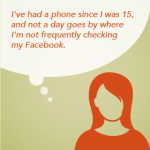Yext PowerListings is a popular and award-winning online listing management service. After you enter your company details, they will propagate in various online local search platforms like apps, maps and social media. Yext has made arrangements with directories such as Apple Maps, Bing, Facebook, Yelp, Citysearch, DexKnows, etc.
The advantages of Yext are speed and consistency. Speed, because you can have your business listed across dozens of internet directories almost instantly. Consistency, because all of your listings will have the same information, plus they will all be updated at the same time should you make a change.
Disadvantages include a high price for what can be considered a rental arrangement. Yext’s best value is the “Complete Package” and it costs $499 per year. Once you leave, your listings revert back to what they were before you signed up. Here is a link to their plans.
Do You Need Directory Listings?
Listings in quality directories give you a higher ranking in Google’s search returns. Most people search in Google, not in the directories themselves. Organic and behavioral factors will influence your rankings more than these citations will. Having rich information about your products or services, good links, and more and better reviews than your competitors also plays a large role in determining Google rankings.
On some of the directory sites, Yext is just one way to update your info. On other sites, Yext is now the only way to update or add a listing. Today Yext may be the most popular service with exclusive directory agreements, but rest assured, competitors will arise. Directories won’t want to limit their sources to Yext alone, and will want to grow their data-assets by making arrangements with other sources, too.
Two Alternatives
1. You can use one of Yext’s competitors. Single Platform and Where 2 Get It are Yext’s biggest competitors. Yext offers a monitoring dashboard that the others don’t. I think most of you will probably never look at it.
2. You don’t need to pay for this service. If you spend the time to do it yourself, the listings will be there forever. Most of the directories are free; some charge a one-time fee of $5.
VIA’s Recommendation
With most things, you either have time or money. If you have money, Yext will save you a ton of time.
If driving people to your location isn’t important to your business, DIY is better. After your tech savvy staff member (assuming you have one) gets the hang of entering your listing, expect that employee to take about a half hour per listing. I always approach large, tedious projects by biting off a little at a time. If you post one listing a week, it won’t be long until you have conquered the most important ones.
Not all directories make sense for every business. We can help you look through the directories to see which ones make sense for you. Here is a link to a list of top citation sources.
“Get Five Stars” app helps secure reviews
Any time you use automation, you’re saving time. The GetFiveStars platform helps you automate the customer feedback process to capture testimonials and online reviews. Manage and monitor your online reputation for as low as $29.95 per month.








